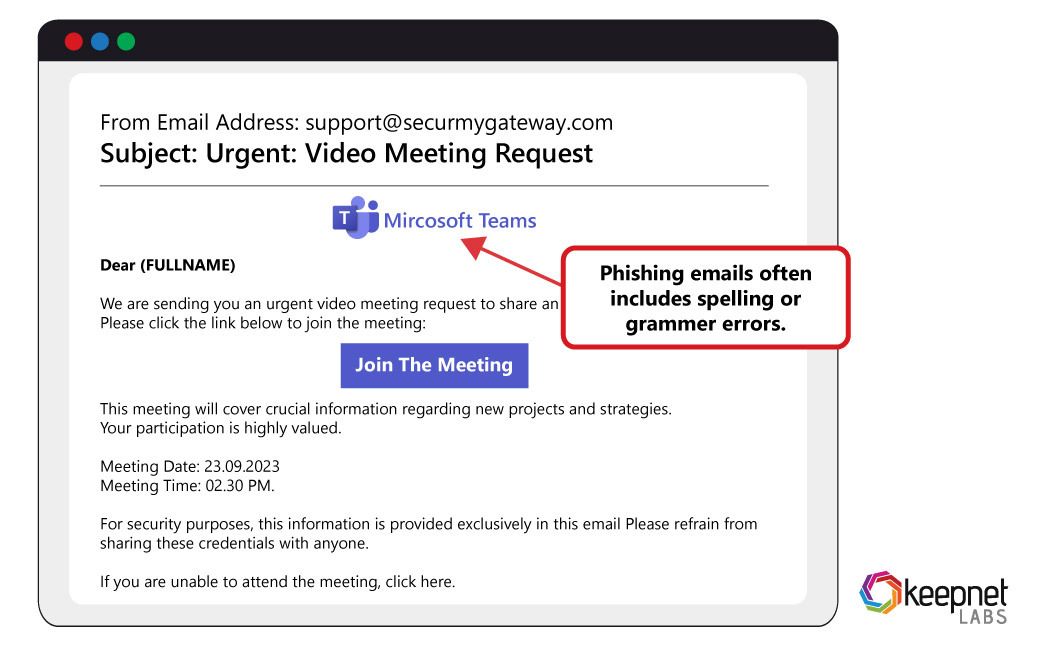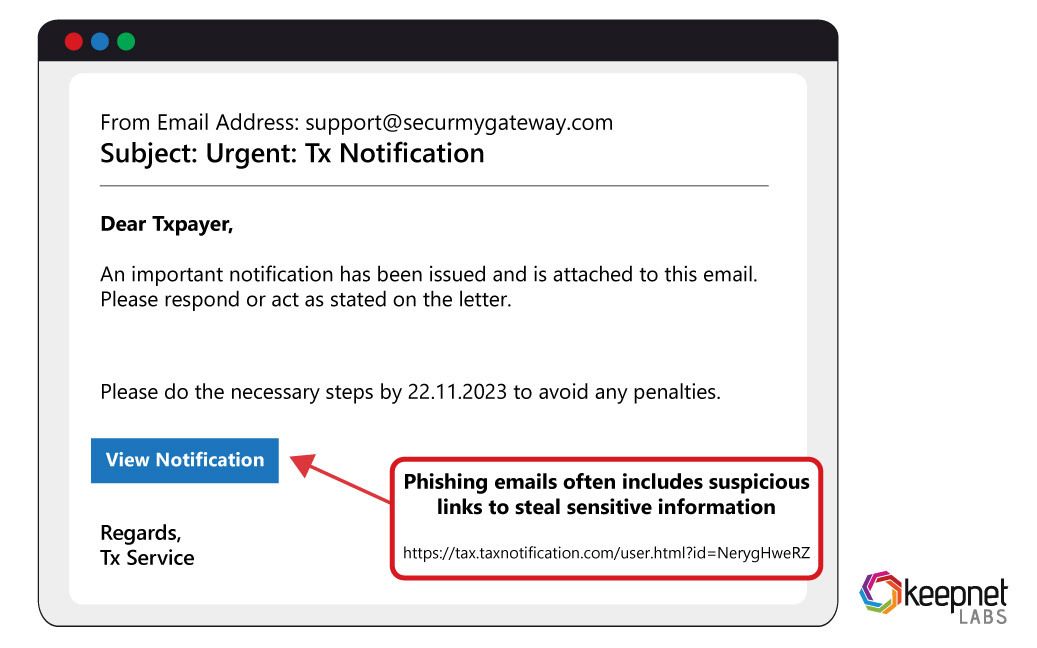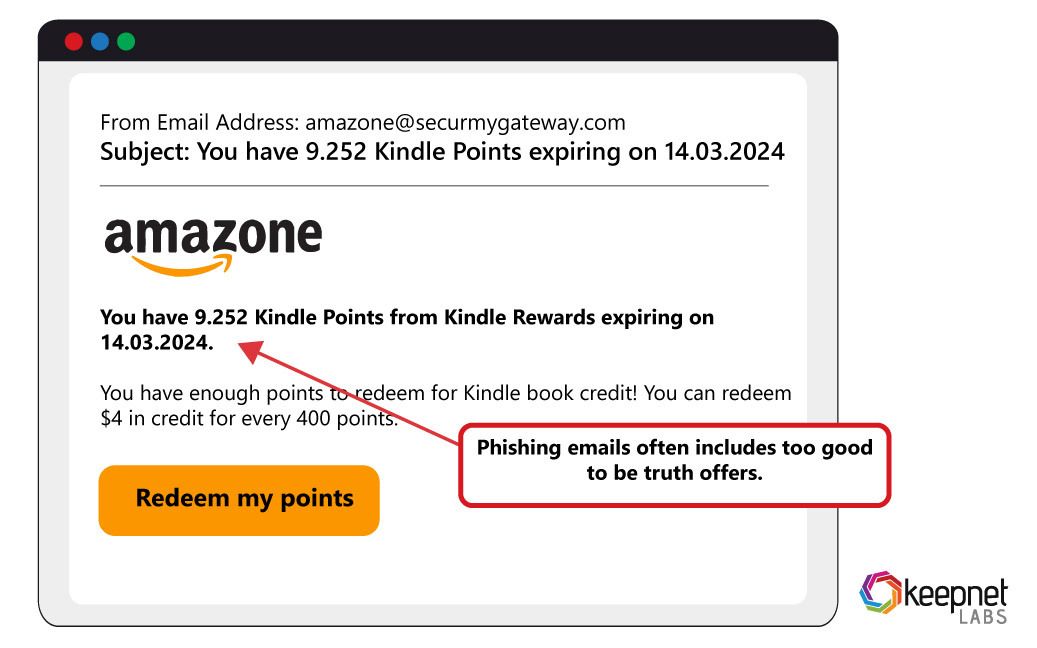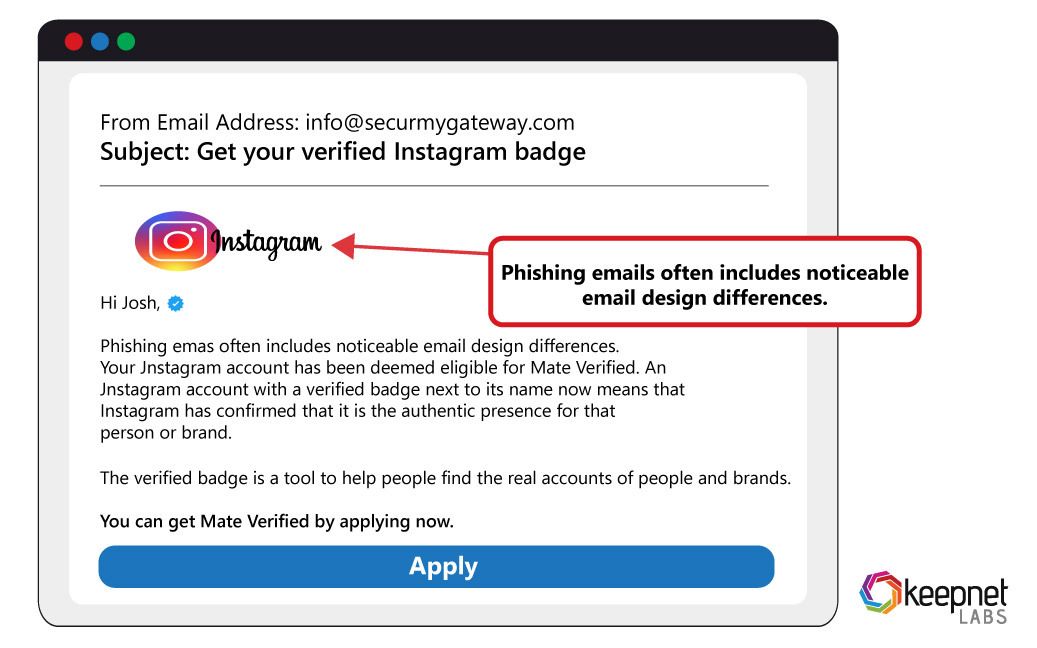10 Easy Ways to Detect Phishing Email
Discover how to identify phishing emails with our 10 essential tips in this blog. Learn to spot unusual sender addresses, generic greetings, and urgent language that could signal a scam. Understand the red flags like spelling errors, suspicious links, and requests for personal information.
Anyone can become a victim of email phishing. Because these phishing attacks are often prepared so skillfully, it becomes very difficult to recognize them most of the time.
But don't worry, there are some ways to detect phishing attacks. Let’s explore the tips below to protect yourself and your company from phishing attacks.
How to Spot a Phishing Email?
Although it is difficult to detect phishing emails, you can significantly reduce your risk of becoming a victim by looking at certain details.
Here are ten easy ways to spot email phishing or spam emails:

Unusual Sender Email Address
Although phishing emails seem real at first glance, you can see anomalies in the sender's address when you look into the details. Check the sender's email address carefully if the email you receive does not have the correct domain or contains strange characters. This should be a warning sign to you.

Generic Greetings
Detecting a phishing email also includes checking greetings. Criminals usually send mass emails using generic greetings like "Dear Customer" or "Dear User." Real companies or organizations address your name and send personalized emails.

Urgent or Threatening Language
Urgency or fear is one of the emotions that hackers exploit. So, hackers use these in email phishing to create a sense of urgency or fear. If you get an email, for instance, that is claiming that your account will be closed or that urgent action is required to avoid negative consequences, take this as a warning sign.

Spelling and Grammar Mistakes
Professional organizations take great care in their communications. So, if the email you got is filled with spelling and grammar errors, take this as a warning sign.

Suspicious Links or Attachments
Contact the sender before clicking links or downloading attachments to verify the email is real. Remember, real companies do not directly ask you to download attachments via email.

Requests for Personal Information
If you get an email asking for personal or financial information, take this as a warning sign. Real companies do not request sensitive information through email.

Too Good to Be True Offers
Detecting phishing email examples also includes amazing offers. These often trick victims with offers that seem too good to be true, such as large sums of money or expensive prizes. Take this as a warning sign.

Inconsistencies in Phishing Email Design
If you get an email from a company you know, look at its design carefully and match it with previous communications from the same organization. Phishing emails may mimic the look but often have noticeable differences.

Check the Email Signature
Detecting phishing emails also involves checking the email signature. Real business emails usually include a detailed signature with contact information. A missing or overly simplistic signature can signify an email phishing. Take this as a warning sign.

Use Email Verification Tools
Many email services offer features to help detect phishing emails. Using these tools can add an extra layer of protection against hackers.

Please also check the YouTube video below to learn how to detect phishing emails.
Also, check our phishing simulator in the video below and see how we can protect organizations against phishing emails.